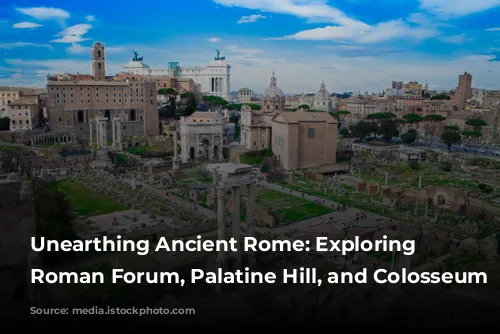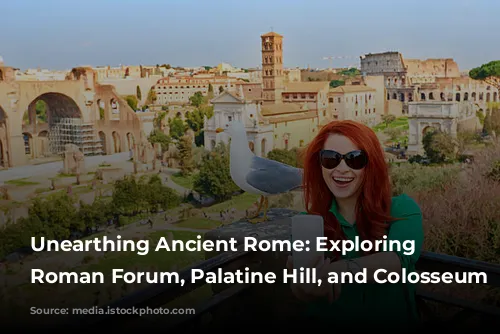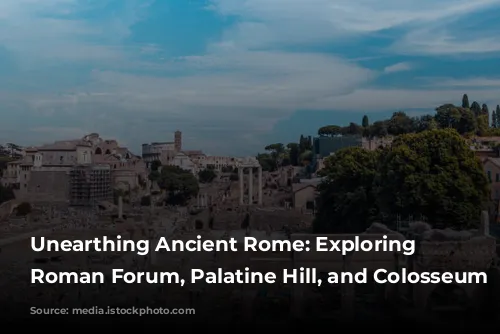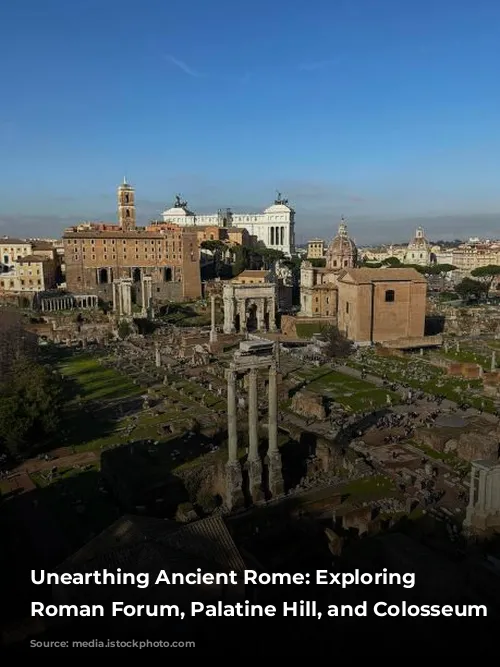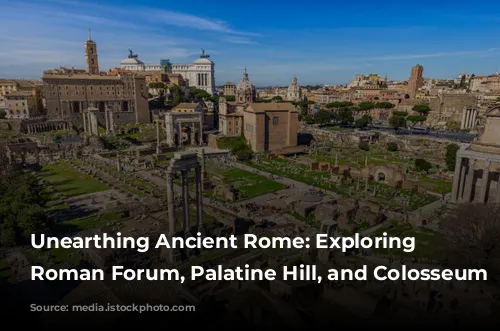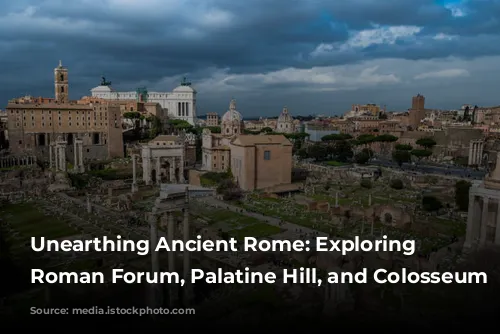Step back in time and discover the fascinating history of ancient Rome! The Roman Forum, Palatine Hill, and Colosseum are some of the most iconic landmarks in the world. But did you know that these incredible sites were once the beating heart of a vast empire?
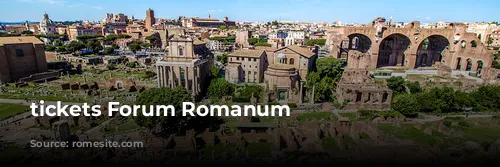
A City Built on History
The story of the Roman Forum begins long ago, even before the first century CE. During the reign of Emperor Augustus, Rome was already a sprawling metropolis with over a million inhabitants. The Roman Forum served as the political, legal, and spiritual center of the Roman Empire. However, it wasn’t until the 19th century that archaeologists began unearthing the buried secrets of this ancient heart.
Sadly, the Forum suffered damage over the centuries from earthquakes, looting, and later construction projects. However, the surviving ruins tell a rich and captivating tale of Rome’s grandeur. A visit to the Roman Forum is a must-do for any traveler to Rome.

Walking Through Time
The Via Sacra is the main thoroughfare of the Roman Forum, a street steeped in history. It gets its name (“sacred street”) from the many temples and holy sites that lined its path. As you stroll along the Via Sacra, you’ll encounter iconic landmarks like the Temple of Vesta, the Temple of Saturn, the Basilica of Maxentius, the Arch of Septimius Severus, and the official residences of the Pontifex Maximus. The Speaker’s Platform and the remains of arches and market halls also stand as testaments to the bustling life that once filled this ancient space.
A fantastic way to get a sense of the Forum’s scale and grandeur is to ascend to the Capitoline Hill. From this vantage point, you’ll have a breathtaking panoramic view of the entire Forum. The view is even more magical at night when the ruins are bathed in soft, illuminating light.
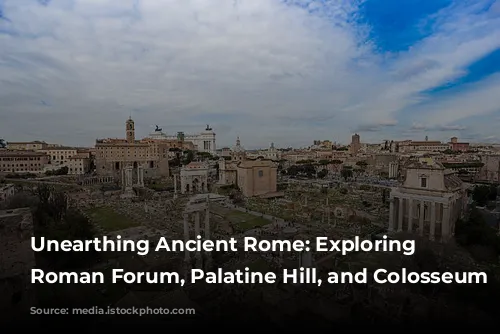
From Swamp to Empire: The Rise of the Roman Forum
Before the Forum became the center of the Roman world, the land between the Capitoline, Palatine, and Esquiline Hills was a swampy area. It was used as a cemetery, but it wasn’t until the 7th century BCE that the swamp was drained thanks to the construction of the Cloaca Maxima, Rome’s ancient sewage system.
The Temple of Saturn and the Temple of the Dioscuri were among the first structures built on the newly drained land. As Rome’s power grew in the Mediterranean, so too did the Forum. In the 2nd century BCE, development accelerated, creating a hub of political and social life.
To further solidify their legacy, Roman emperors began constructing their own imperial fora, also known as the Fora Imperiali, adjacent to the Roman Forum. These impressive structures, built between 54 BCE and the second century CE, aimed to preserve the emperors’ achievements for generations to come. Some of the most notable imperial fora, partially obscured by modern buildings, include:
- Forum of Caesar: Home to the Temple of Venus Genetrix.
- Forum of Augustus: Featuring the Temple of Mars Ultor, the god of war.
- Forum of Vespasian: With the Temple of Peace.
- Forum of Trajan: The most impressive and ambitious of the imperial fora.
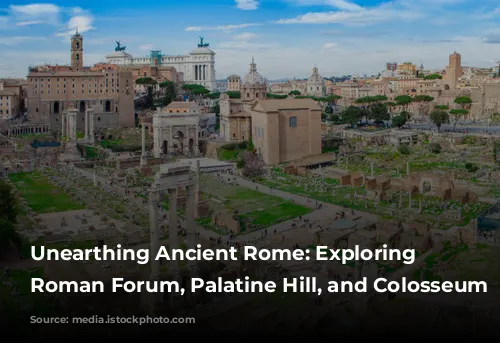
The Palatine Hill: Home to Emperors and Legends
The Palatine Hill, one of Rome’s Seven Hills, played a pivotal role in the rise of the Roman Empire. As early as the 9th century BCE, the hill became a favored residence for wealthy Romans. Notable figures like Cicero, Crassus, Augustus, and Tiberius all called the Palatine Hill home. Emperor Tiberius further solidified the Palatine’s reputation as an imperial residence, and according to legend, Romulus, the mythical founder of Rome, established his city on this very hill in 753 BCE.
Today, the Palatine Hill is a fascinating archaeological site. It’s connected to the Roman Forum and is home to impressive ruins, including the Domus Augustana, the grand palace built by Emperor Domitian, and the beautiful 16th-century gardens of Cardinal Alessandro Farnese. The Antiquarium museum, also on Palatine Hill, displays models of early Roman settlements and archaeological discoveries from the area.
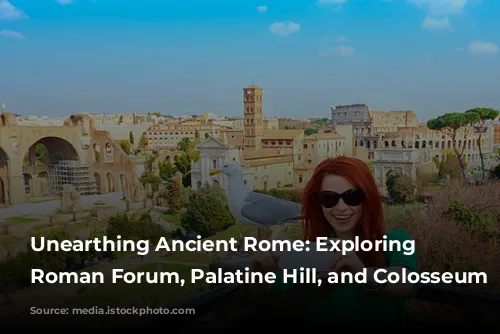
Visiting the Roman Forum: Planning Your Trip
Do you need tickets for the Roman Forum? Yes, you’ll need a ticket or guided tour to explore this ancient wonder. Tickets are available online or at the site entrance, and there are several options for purchasing your tickets or tours. During peak season, the combination tickets for the Roman Forum, Palatine Hill, and Colosseum sell out quickly, so it’s best to plan ahead.
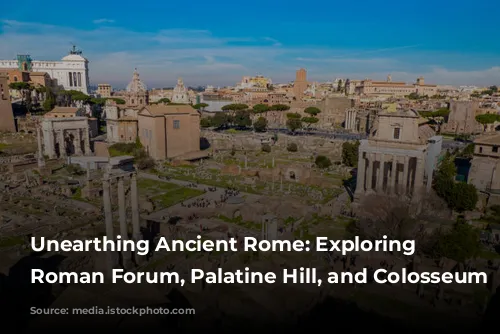
Location, Location, Location
Where is the Roman Forum? It’s located in the heart of Rome, Italy, near the Colosseum in the Rione Campitelli district, nestled between the Palatine and Capitoline Hills. The Roman Forum was once the bustling center of ancient Rome, brimming with public buildings, temples, basilicas, and monuments. Today, visitors can wander among the ruins, imagining the grandeur of this ancient civilization and the echoes of its past.
The Colosseo metro stop is just a short walk from the entrance to the archaeological site.
Start planning your journey to ancient Rome! A visit to the Roman Forum, Palatine Hill, and Colosseum will transport you back in time, offering a glimpse into the fascinating history and culture of one of the world’s most influential empires.

